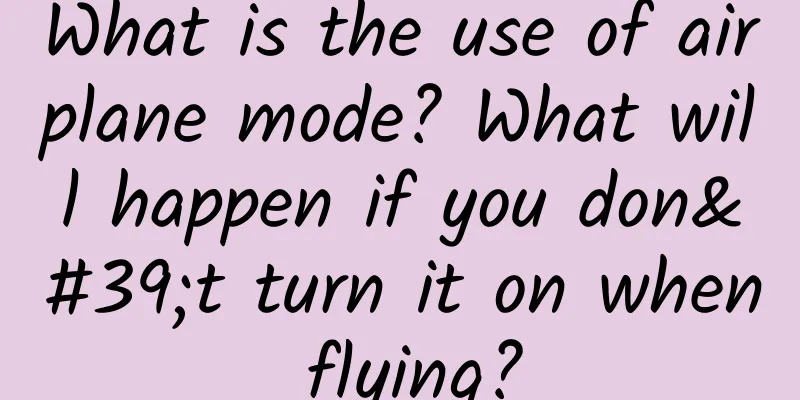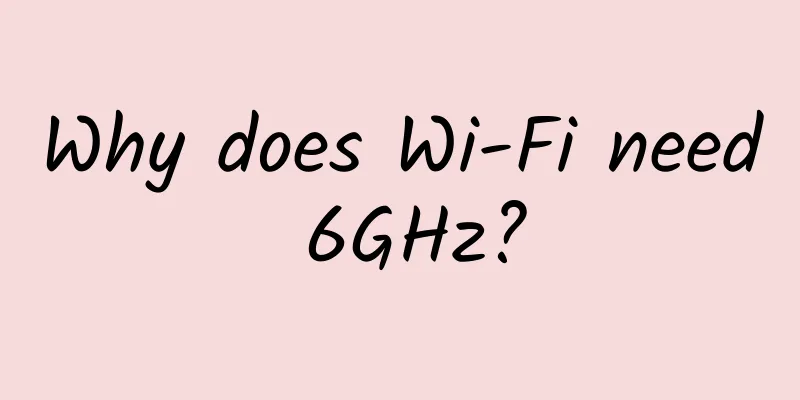What is the use of airplane mode? What will happen if you don't turn it on when flying?

|
Everyone knows that when flying, you should turn on the flight mode of your mobile phone or turn it off. However, as time goes by and the regulations of different airlines vary, the degree to which electronic devices, including mobile phones, are restricted on airplanes has also changed.
Earlier, when flying, flight attendants would ask passengers to "turn off their phones throughout the flight", but later told passengers to just turn on "flight mode". In addition, there have been different opinions on whether it is possible to use mobile phones normally during flight other than takeoff and landing. Many people also have doubts about the safety of using Bluetooth headsets. Some airlines have even launched Wi-Fi services on airplanes. So how should we use mobile phones correctly on airplanes? The reason for the restriction is not just aircraft communication interferenceIn the 1990s, as mobile phones became more popular, more and more people took planes, and more and more mobile phones were brought to the sky by passengers. However, this brought with it a "nightmare" for pilots. Mobile phones in the cabin that were constantly receiving wireless signals would interfere with the aircraft's communication system, causing the pilot's earphones and call speakers to emit a buzzing sound similar to that of a mobile phone receiving calls and text messages close to the speaker.
I believe most people use audio noise to predict incoming calls. If this noise occurs at a critical moment and the flight dispatch information is not communicated clearly, it may result in the destruction of the aircraft and the loss of life (for example, the dispatcher tries to inform aircraft A and aircraft B that they are about to collide). This is the main reason why the use of mobile phones on airplanes is restricted.
Ground towers help coordinate traffic Another reason is also communication interference, but it has nothing to do with airplanes. In the United States, the decision maker for banning phone calls on airplanes is not the Federal Aviation Administration (FAA), but the Federal Communications Commission (FCC), which is responsible for wireless communications. Since 1991, the FCC has banned mobile phone calls in the air because such behavior would disrupt the mobile phone operator network on the ground.
Cell phone operator tower When an airplane is moving at high speed in the air, if someone makes a call, the phone will try to connect to various base stations wherever it flies, adding burden to the ground network. Although this reason is no longer valid due to the development of new technology (an aerial base station on an airplane), the relevant regulations have not been updated. Of course there is another reason, which is also related to safety, but has nothing to do with any equipment. Before the plane takes off and lands, as well as during the flight, the captain and flight attendants will broadcast various safety instructions and reminders to passengers in the cabin. The crew hopes that passengers can concentrate on listening instead of looking down at their phones. This is a reason that most people ignore. If there is an emergency on the plane, do you want to be the passenger who didn't hear clearly how to use the life jacket or where the emergency exit is because of playing with the phone?
In order to avoid these potential problems, many aviation agencies/companies have adopted a one-size-fits-all approach of shutting down the aircraft throughout the entire journey. Relaxation of mobile phone use in the airline industryHowever, with the upgrade of aviation communication equipment, the ability of these devices to resist radio interference has also improved. In addition, as flying continues to become more popular, conventional aviation safety knowledge has become common sense for more people. The dual development of technology and awareness has led to agencies and airlines in various countries successively relaxing restrictions on the use of mobile phones on airplanes.
In September 2013, the European Aviation Safety Agency updated the relevant regulations, allowing passengers to use their mobile phones throughout the journey, provided that the flight mode is turned on; in April 2014, the Directorate General of Civil Aviation of India also revised the regulations to allow passengers to use their mobile phones in flight mode throughout the journey; in September 2017, the same regulations were adopted by the Civil Aviation Administration of China, and passengers can use their mobile phones throughout the journey without any problem, as long as they turn on the flight mode.
The United States is a special case. In October 2013, the Federal Aviation Administration proposed "allowing the use of mobile phones in airplane mode", but this recommendation does not apply to all situations. Depending on the airline, aircraft model, and pilots' "tolerance", there are different regulations on whether Bluetooth and Wi-Fi can be used.
Bluetooth headsets have become standard equipment for many passengers In the same year, the Federal Communications Commission (FCC) of the United States considered allowing passengers to make phone calls during flights. However, this new rule was strongly opposed by the aviation industry before it was implemented. In 2021, the result finally came out, and the American dream of making phone calls on the plane was shattered. There is no research to prove that cell phones interfere with aviation instrumentsIn addition to the noise interference to the pilot's headphones and speakers, the interference of mobile phones on various instruments on the aircraft (such as navigators) has always been the main reason why many people support the banning of mobile phones on aircraft. However, both third-party organizations and aircraft manufacturers such as Boeing have tried to find evidence that mobile phones affect aircraft flight instruments, but to no avail. On the other hand, no one can prove that mobile phones will not interfere with flight instruments. Therefore, out of caution, forced flight mode is still a safer approach.
Civilian airliner flight cockpit Therefore, as a passenger, the safest thing to do is to set your phone to airplane mode no matter what flight you are on. As for Bluetooth headsets, you can use them normally. If you encounter a flight that provides Wi-Fi, you can also turn on Wi-Fi when appropriate. If the flight attendant requires you to turn off your phone during takeoff and landing, you should try to comply. Unless there is an emergency, do not make phone calls or send text messages, as this may prevent the pilot from hearing the voices of the ground personnel. In short, safety always comes first, especially at an altitude of 10,000 meters. |
<<: From the SPACE matrix, is 5G on the road to success?
Recommend
How 10 popular SD-WAN startups survive in the cracks
The SD-WAN market is very hot. Large enterprises ...
Experience first, Borei Data builds a monitoring system centered on user conversations
Research has found that when page access performa...
A practical guide to running databases across regions and Kubernetes clusters
Translator | Kang Shaojing Planning | Yun Zhao Am...
Can you tell me about Zookeeper's ZAB protocol? Sorry, I have a stomachache!
This article is reproduced from the WeChat public...
Unlimited speed & 2TB large capacity! Alibaba Teambition cloud disk experience
[[355404]] The news that Alibaba is going to ente...
Ministry of Industry and Information Technology: Improve 5G service quality and strictly adhere to four marketing red lines
[[380517]] On February 3, the Ministry of Industr...
How is the UK train network going digital?
[51CTO.com Quick Translation] Dennis Rocks, produ...
5G and eSIM are now a must for IoT companies
Embedded Subscriber Identity Module (eSIM) techno...
More intelligent CDN technology, CDN moves towards the 3.0 era
Our lives are dependent on the Internet all the t...
NASA to launch laser communications relay demonstration mission this year
According to foreign media, NASA has a mission ca...
ServerGigabit: Malaysia VPS monthly payment starts from US$9.59, 100M unlimited traffic
I received two emails from ServerGigabit. The mer...
DiyVM: Japan Osaka/US Los Angeles/Hong Kong Shatin CN2 line 2G memory VPS monthly payment starts from 50 yuan
DiyVM has recently made major changes to the webs...
Liu Liehong from the Ministry of Industry and Information Technology: Three suggestions to promote the development of 5G integrated applications
[[399809]] On May 17, at the "2021 World Tel...
5G and emerging technologies drive data center growth in India
Since 2018, India has made great strides in advan...
Learn more about load balancers
Every load balancer is a reverse proxy, but not e...









